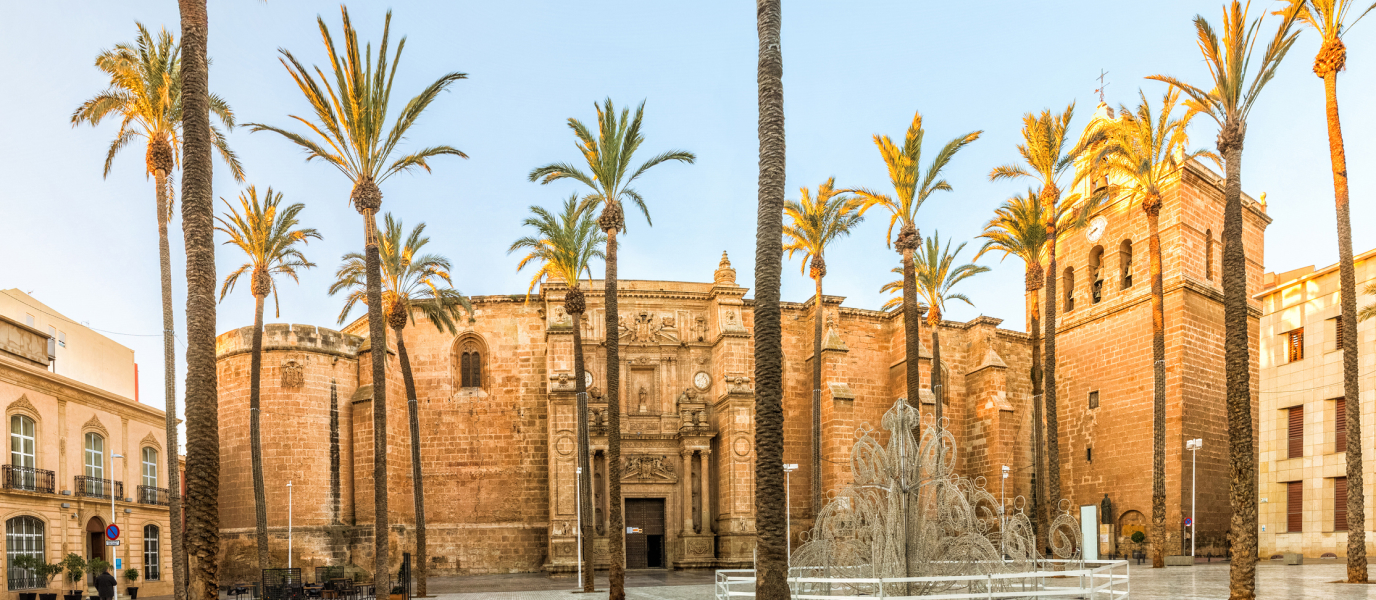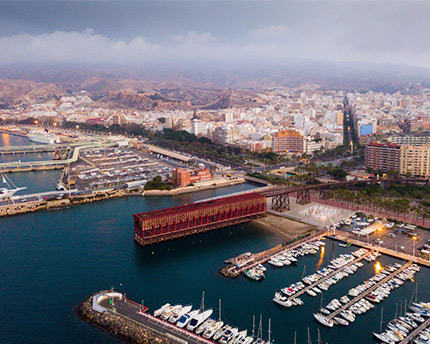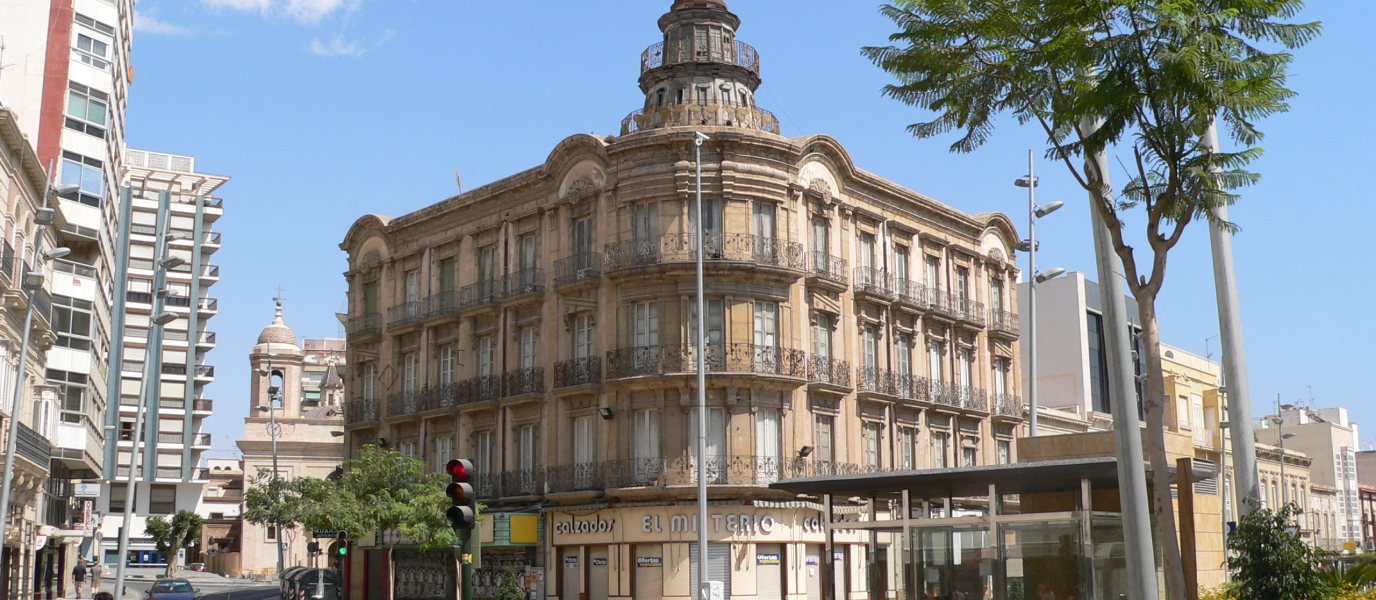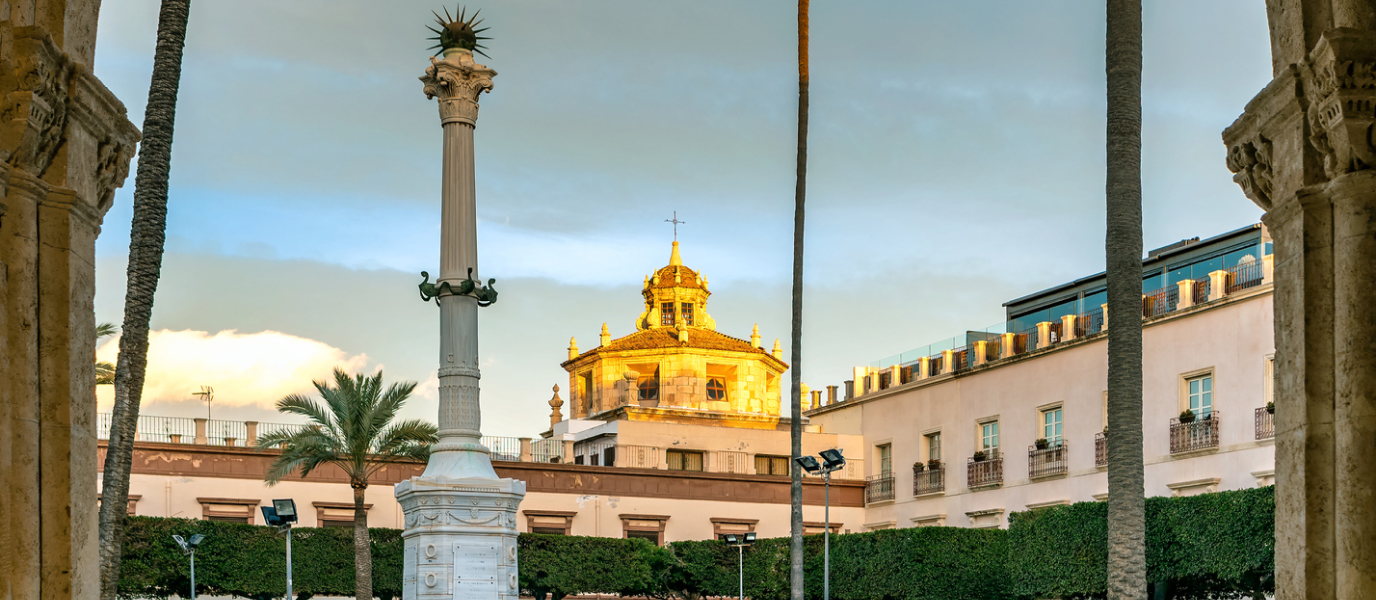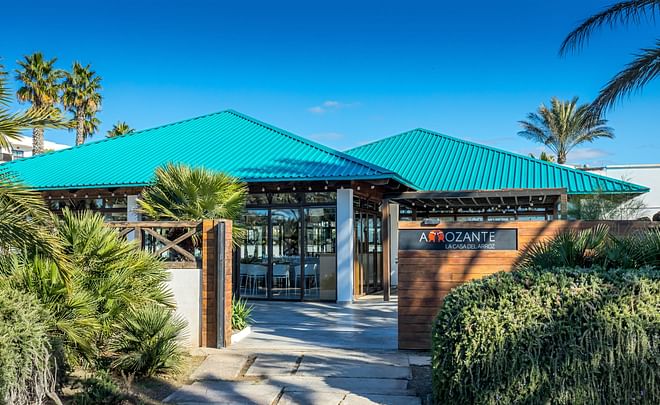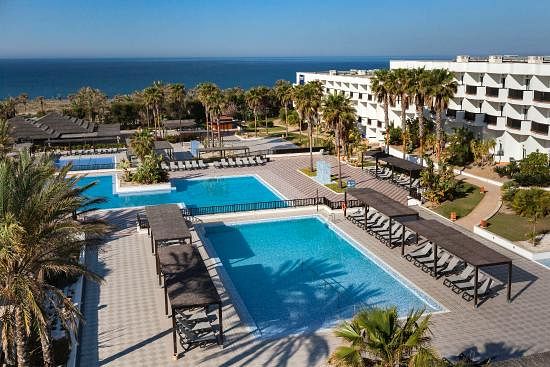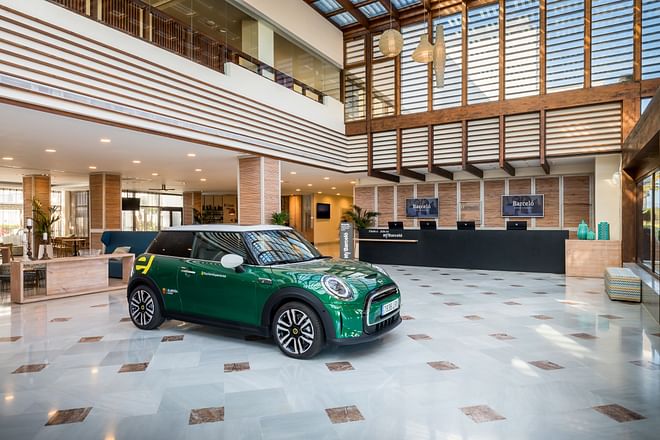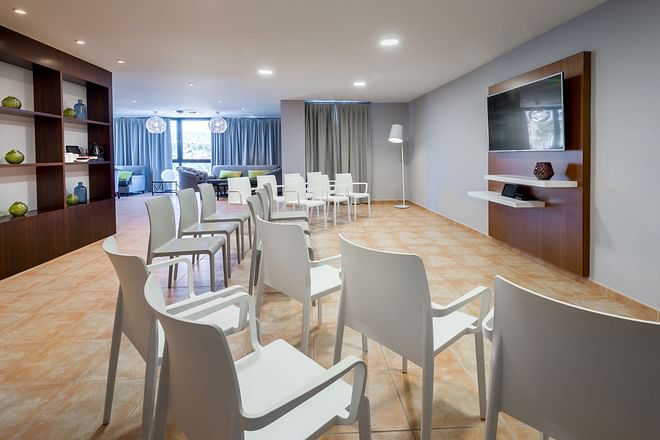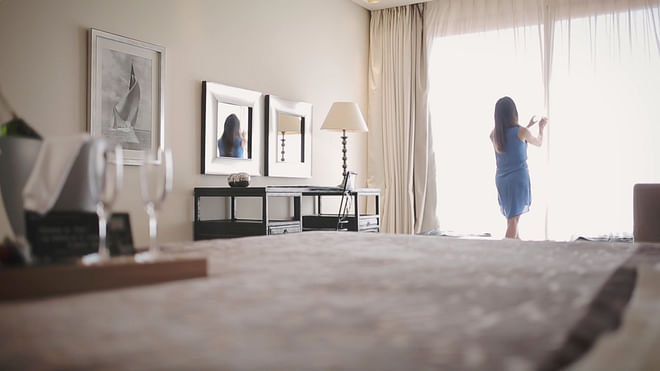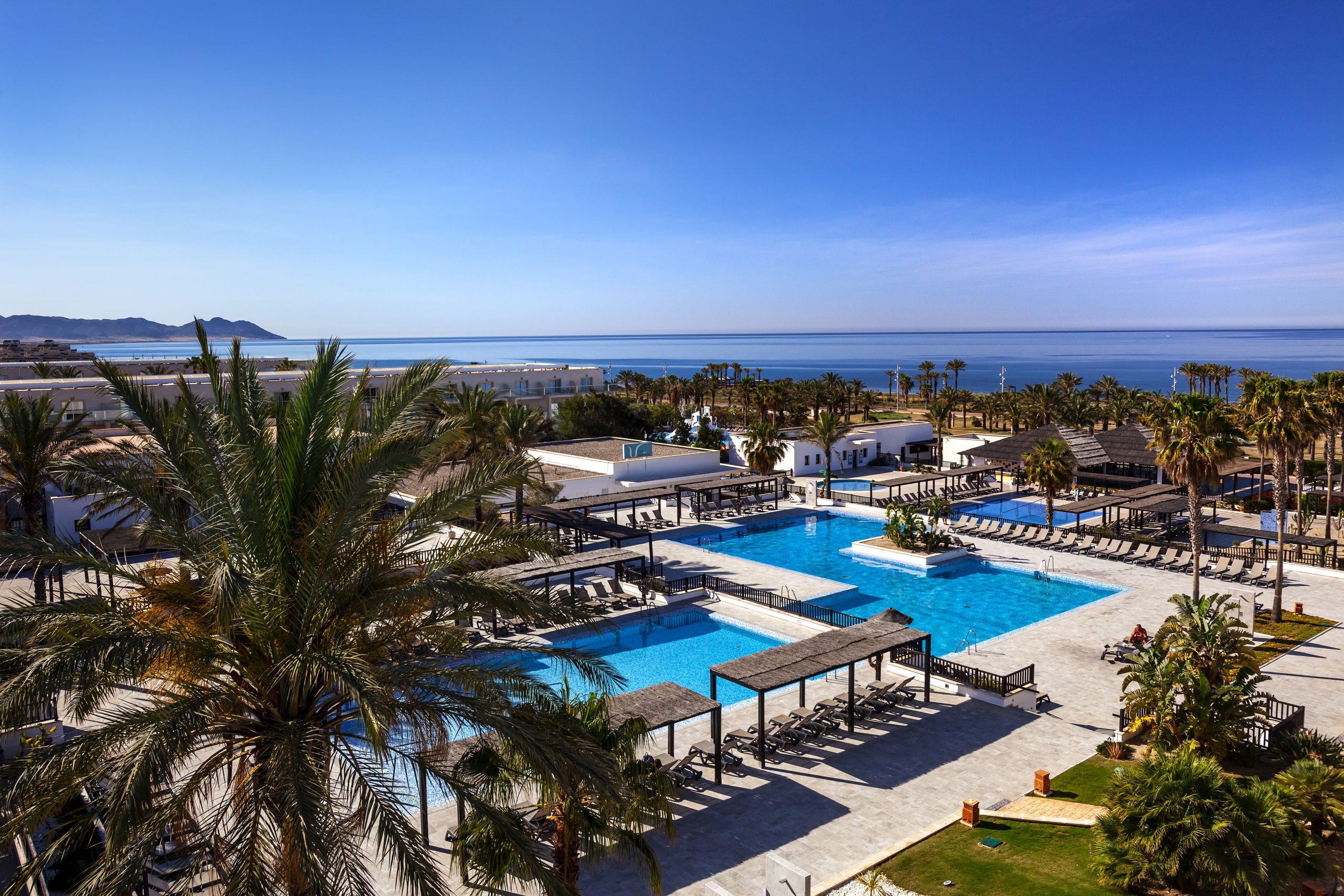During the 15th and 16th centuries, Almeria was frequently attacked by Berber pirates and needed buildings that could provide safe haven to people. It is not surprising to see many of the civil and religious buildings from those periods designed with a certain military-like fashion. The Cathedral of Almeria is such an example. Located in the old quarter of the town, it was built at the beginning of the 16th century as a place of worship and refuge. The imposing battlements, turrets and buttresses were built in true robust military style. It is the only building in all of Andalusia to present such features. In fact, it is one of the rare examples of this type of architecture in all of Spain. The Cathedral of Almeria also stands out for its rich artistic heritage and its location in one of the most picturesque and liveliest squares in the city. The legion of lush, towering palm trees huddle around the square, contrasting beautifully with the ochre-coloured cathedral and creating a modern-day urban refuge
The history behind the Cathedral of Almeria
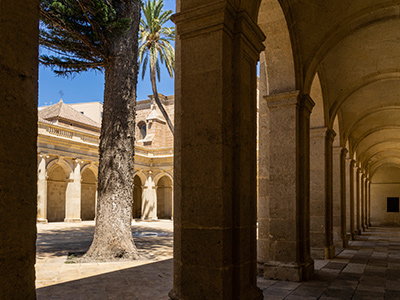
In 1522, only thirty years after the Catholic Monarchs had conquered Almeria, a terrible earthquake completely destroyed the city’s church. The construction of a new church was commissioned by the Bishop of Almeria, Fray Diego de Villalán, and the new temple needed to be worthy to be the seat of the Diocese of Almeria. It was originally designed by the architect Diego de Siloé but it was completed by Juan de Orea. The cathedral was conceived to serve as a fortress in order to defend the population against frequent raids and attacks perpetrated by pirates and rebelling moriscos. It was officially completed in 1564 and represents an amalgamation of architectural styles from the 16th, 17th and 18th centuries. The original Gothic-Renaissance design converges with baroque and neoclassical features that were later added. We can thank the renowned Spanish architect Ventura Rodríguez for the beautiful neo-classical additions.
The government of Spain declared the cathedral a Cultural Heritage Site in 1931 but that didn’t stop it from being almost entirely destroyed during the Spanish Civil War, only five years later.
The cathedral today
One of the most striking features of the cathedral is the heavily-adorned, Renaissance-style main entrance. The bottom part of the door depicts a Roman triumphal arch, while the top part is decorated with allegories and shields – an obvious ode to the military and intellectual power of the Charles V of Spain, under whom Spain became the world’s biggest power.
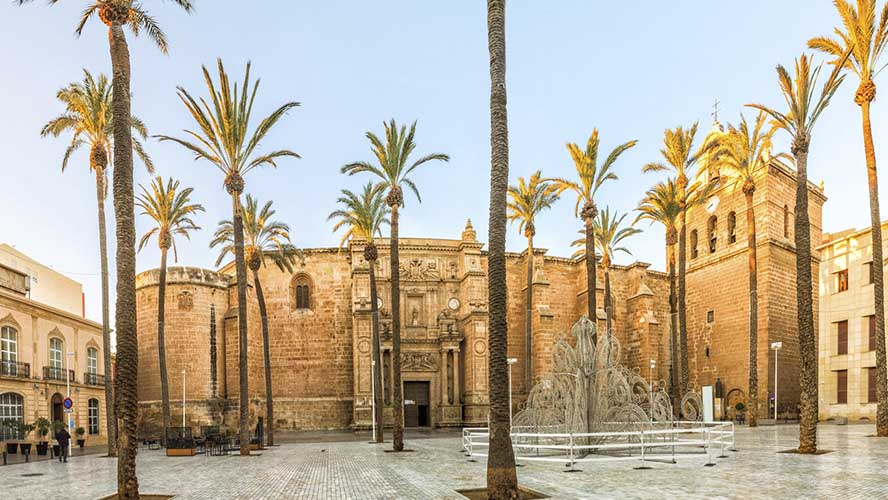
The second entrance, Puerta de los Perdones, was designed in a similar fashion to the front entrance by Juan de Orea. This time it pays tribute to the reign of King Phillip II, Charles V’s son.
A tour inside the cathedral
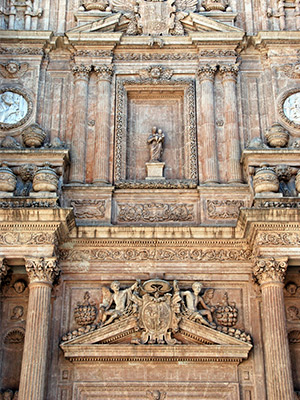
The cathedral is made up of three low, uniform naves, designed to withstand the impact of artillery. The flat rooftop was conceived this way so that it could accommodate cannons. The main altarpiece is a striking example of Baroque architecture. There is a hidden chapel which houses the impressive tomb of Bishop Fray Diego de Villalán. The exterior wall of this very chapel is adorned by the lavish Sol de Portocarrero, a relief of the sun, now serving as the province’s symbol.
There interior of the cathedral houses six other chapels, dedicated to bishops, saints and virgins. There is also the magnificent chancel, comprised of 75, 16th-century, walnut choir stalls and two Baroque-style organs.
Lastly, the magnificently medallion-adorned half-barrel vault, sacristy was built in the same style of the cloister. This open-air space was originally built to serve as a weapons courtyard.
Tours of the cathedral and time of masses
The cathedral holds two masses per day, which are open to the public: one in the Capilla Mayor at 9 a.m. and one in the Capilla de La Asunción at 7.30 p.m. Holy Mass is held at 11.30 a.m. on Sundays in the Capilla Mayor.
If you are only looking to visit the cathedral, you can hire a tour guide. The first part of the tour allows you to visit the entire cathedral, while the second part of the tour takes you to the permanent exhibition hall where you can browse the impressive art collection, dating back to the end of the Spanish Civil War.
























































